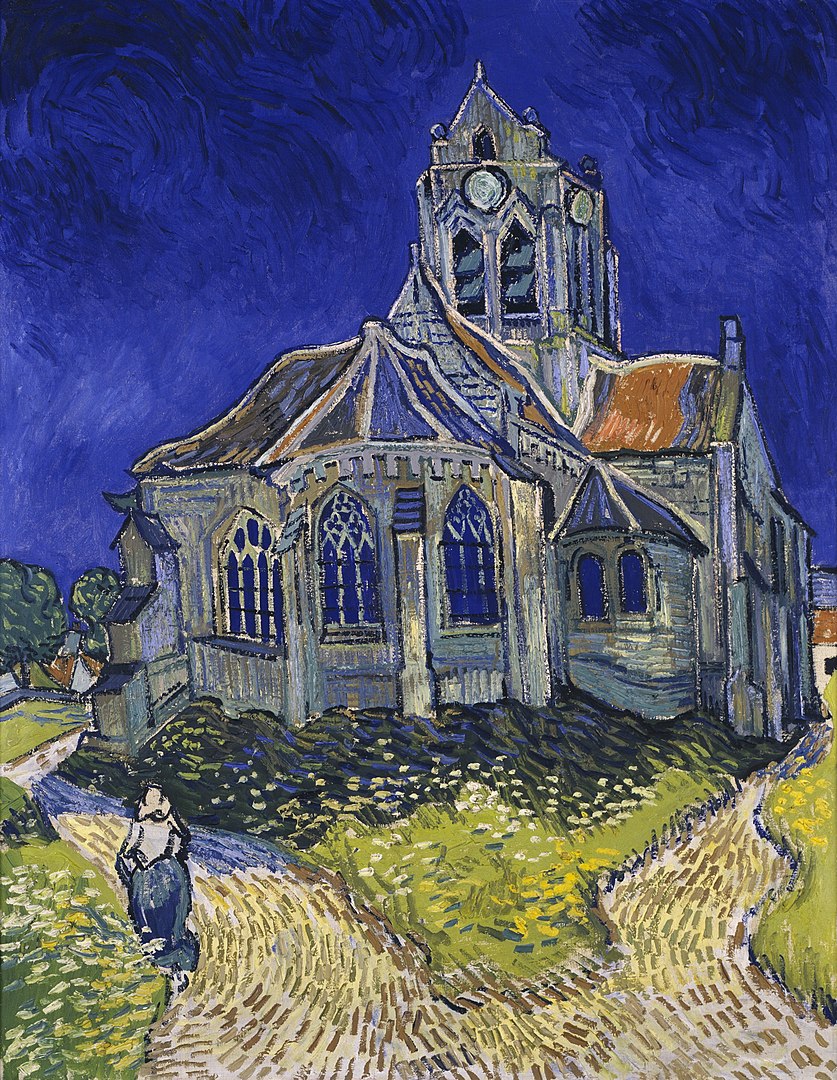Vincent van Gogh is well-known for his expressive brushwork and use of bright and vivid colors. What do his last-days works look like?
Vincent’s The Church at Auvers-sur-Oise (1890) depicts a church that has a tiny green wild grass field and flowers. A woman is seen walking down the street in front of a church. Every detail, from sky, building, to street, was drawn in Van Gogh’s manner: circular and energetic lines. His work conveys serenity, but also melancholy.

By Michael Hunter – Google Arts & Culture: Home – pic, Public Domain, https://commons.wikimedia.org/w/index.php?curid=21856347
Vincent van Gogh resided in the French commune of Auvers-sur-Oise, close to Paris, from May 20, 1890, until his passing on July 29, 1890. Previously, in May 1890, Vincent left the Saint-Rémy psychiatric hospital in the south of France, close to Arles. He then found a certain peace in the village of Auvers-sur-Oise. He intends to manage his life independently with his condition.
In these months (May-July 1890), Vincent was very productive, inspired by his new environment, and also lonely feeling.
Wheatfield with Crows (1890) portrays a wheat field with a flock of crows hovering in the distance. A dramatic sky also appears overhead. This haunted scenery suggests the artist’s inner turmoil and despair, but the yellow wheat field might symbolize his hope.

By Vincent van Gogh – www.galeriacanvas.pl, Public Domain, https://commons.wikimedia.org/w/index.php?curid=4400305
During Vincent’s life in the north of France, he wants to live close to his brother Theo, who lives in Paris with his young family. Auvers-sur-Oise was located around 30 kilometers from the French capital. In this village, Vincent also met Paul Gachet, a physician who could keep an eye on him.
Shortly after his arrival, Vincent met Dr. Gachet, who began paying frequent visits to his residence. Instead of providing the artist with medical treatment, Dr. Gachet spoke with him extensively and urged him to paint. As an art lover, Gachet taught Vincent to etch. Portrait of Doctor Gachet (1890) was the result of Vincent’s learning of etching.
etching, 18 cm × 15 cm
(Van Gogh’s only etching)
By Vincent van Gogh – repro from artbook, Public Domain, https://commons.wikimedia.org/w/index.php?curid=9522011
On the night of July 27, 1890, Vincent was badly wounded when he entered the inn he rented during his stay in Auvers-sur-Oise. When Ravoux, the inn owner, asked what he had done, he replied, ‘I tried to kill myself’.
Theo was informed the following morning and hurried from Paris to his brother’s residence. Vincent was awake, and the brothers could communicate. Vincent passed away the night after.
In one of Vincent’s letters, he wrote: ‘[…] my life, too, is attacked at the very root, my step also is faltering.’ It might show his deteriorating mental health since the beginning of July.
Vincent has gone, but he remains with us through his works. One of Vincent’s friends and artists wrote: ‘He lives on for you, for us – and for everyone – in the works he left us.’
Vincent van Gogh’s final months works can be viewed in Van Gogh in Auvers. His Final Months at the Van Gogh Museum, Amsterdam, from May 12–September 3, 2023.
